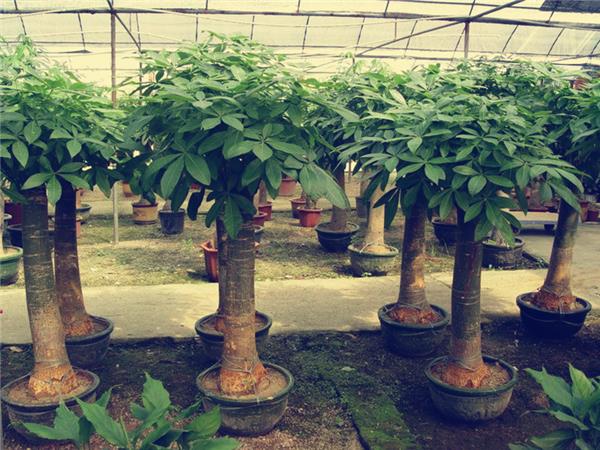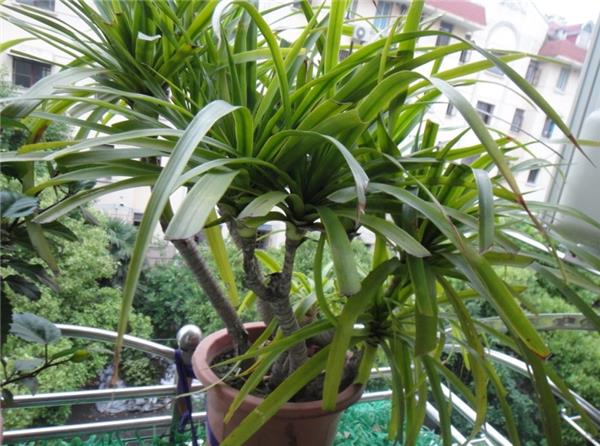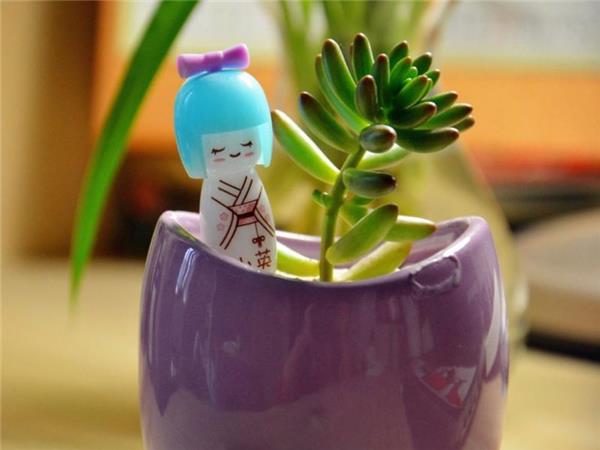[potted plants] how to correctly water and fertilize potted plants
There are many common indoor potted plants, and the most important thing for their conservation is watering and fertilization, because no plant can survive completely without these two links.

Common indoor potted plants
Green pineapple: generally speaking, potted plants less than 30 centimeters are called small potted plants. when it comes to beautifying your home, it has to be mentioned. Green pineapple is a kind of all-green vine, which is very common in home decoration. Green pineapple can be said to be an expert at purifying the air, and it also enjoys the reputation of "green purifier". If your house is just decorated, you can buy several pots of green pineapple and put it at home. Add some Mayan blue, you can quickly reach the check-in standard, put the green apple on the flower rack, let its stem hang down, like a green curtain, unique fun.
Cymbidium: in ancient times, orchids appeared widely in landscape painting. Cymbidium is one of the most popular indoor hanging plants. The reason why Cymbidium is favored by friends is that it not only has a slender and soft shape, but also the king of formaldehyde removal in plants. Cymbidium can carry out photosynthesis in weak light, can absorb more than 80% of indoor harmful gases, and has a strong ability to absorb formaldehyde.
Fortune tree: the wealth tree is not only a good moral, but also changes with the different environment. The wealth tree is placed in the bedroom, indicating the owner's dream of striving toward the goal, and the wealth tree is placed next to the TV set. It shows the furniture style of environmental protection and health, and puts the wealth tree in the living room and study, reflecting the tranquil Chinese style.

Second, how to water potted plants
1. Watering is a regular work of potted plants. The principle of watering potted plants is simplified into one sentence: "see dry, see wet". As we all know, the natural weather is always changing between sunshine and rain, and several sunny days often occur one after another after a thorough rain, followed by a new rain. This rhythmic change of spontaneous combustion weather makes the soil moisture in nature always in the process of alternating dry and wet, and plants adapt to this dry and wet soil environment in the process of long-term phylogeny. Therefore, the principle of watering potted plants is designated on the basis of imitating the dynamic change law of soil moisture in nature.
two。 Do not pour half a section of water when raising potted plants. That is, although there are many times of watering, the amount of water each time is not large, especially after the potted plants are put on the pot, the soil which is not watered through for the first time and can only be soaked through the surface layer just soaks through the surface layer, so the phenomenon of "waist water interception" is formed in the basin. It is completely opposite in nature to the scientific watering method between dry and dry.
3. Potted plants are afraid of overwatering. For most people, it doesn't matter to water a few times less once in a while. If the basin soil is dry and wet for a while, it's best not to water it for a while. At the same time, the principle of "dry and wet, dry and thoroughly watered" also needs to be correctly understood. The so-called watering is that the water can seep out slowly from the pot bottom hole, so there is a saying that watering potted plants is "thoroughly watered without leakage".

Third, how to fertilize potted plants
1. According to seasonal fertilization, spring and summer is the peak period for flower growth, during which the plant grows rapidly, the metabolism is exuberant, and more nutrients are needed, so the "three-element" fertilizer based on nitrogen fertilizer should be applied to make the root system developed and strong, enhance the absorptive capacity, and promote the growth of branches to facilitate flowering and fruiting.
two。 After changing the pot soil can not be fertilized immediately, potted flowers grow in the pot for a long time, the soil nutrients will be exhausted, need to change the pot soil in time, increase the base fertilizer, in order to facilitate flowering and fruiting. However, the roots of the newly planted plants after changing pots are mostly damaged, and their ability to absorb fertilizer and water is weak, so they can not be fertilized so as not to stimulate the wound, cause rotten roots and affect the survival rate.
3. Supplemented by extra-root fertilization. When the climate and basin soil conditions are not suitable for fertilization or the effect of fertilization is small, the means of extra-root topdressing can be adopted. Practice has proved that better results can be obtained by topdressing outside the root in this case.
4. According to plant growth, strong plant physiological activity, fast growth, strong absorption capacity, need a lot of nutrients, should be frequently applied nitrogen fertilizer. The growth of diseased and weak plants is slow, the metabolism is not prosperous, the absorptive capacity is poor, less fertilizer is needed, and less or no fertilizer can be applied.

Of course, although watering and fertilization are essential for potted plants, we should also pay attention to other conditions such as light, soil, temperature and so on. Only comprehensive care can ensure the overall health of plants.
Of course, although watering and fertilization are essential for potted plants, we should also pay attention to other conditions such as light, soil, temperature and so on. Only comprehensive care can ensure the overall health of plants.
- Prev

Culture methods and matters needing attention of lover's tears of succulent plants
Culture methods and matters needing attention of lover's tears of succulent plants
- Next

How to raise Iron Begonia what is the reason why the leaves of Iron Begonia turn yellow
How to raise Iron Begonia what is the reason why the leaves of Iron Begonia turn yellow
Related
- Wuhan Hospital Iron Tree Blooming Result Was Instantly Frightened by the Gardener Master
- Which variety of camellia is the most fragrant and best? Which one do you like best?
- What is the small blue coat, the breeding methods and matters needing attention of the succulent plant
- Dormancy time and maintenance management of succulent plants during dormancy
- Minas succulent how to raise, Minas succulent plant pictures
- What are the varieties of winter succulent plants
- How to raise succulent plants in twelve rolls? let's take a look at some experience of breeding twelve rolls.
- Attention should be paid to water control for succulent plants during dormant period (winter and summer)
- Watering experience of twelve rolls of succulent plants
- Techniques for fertilizing succulent plants. An article will let you know how to fertilize succulent plants.

